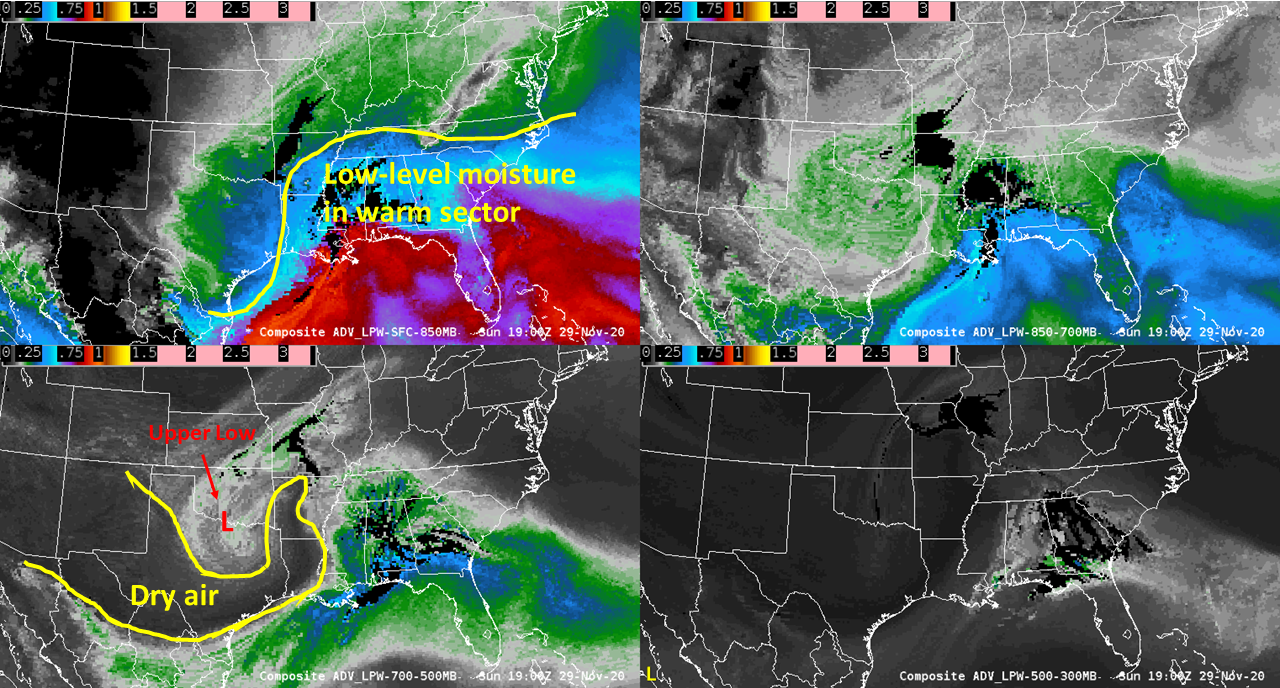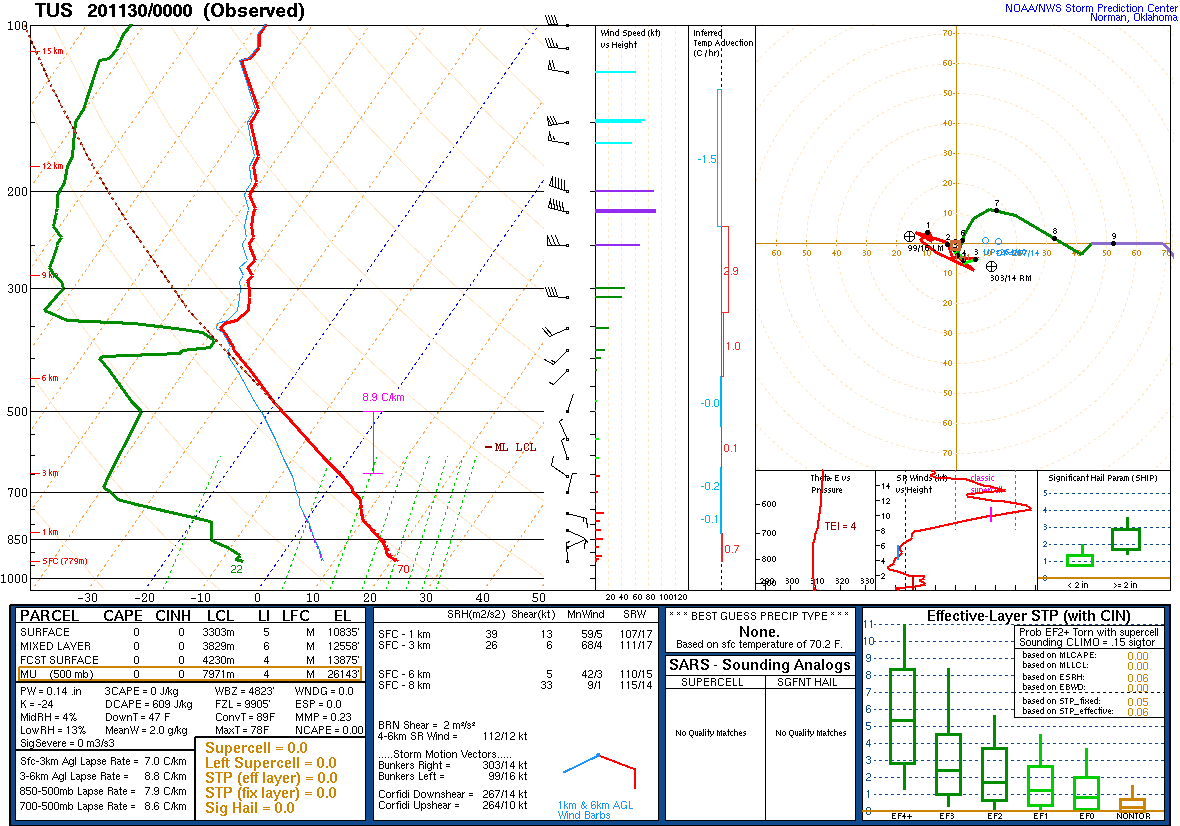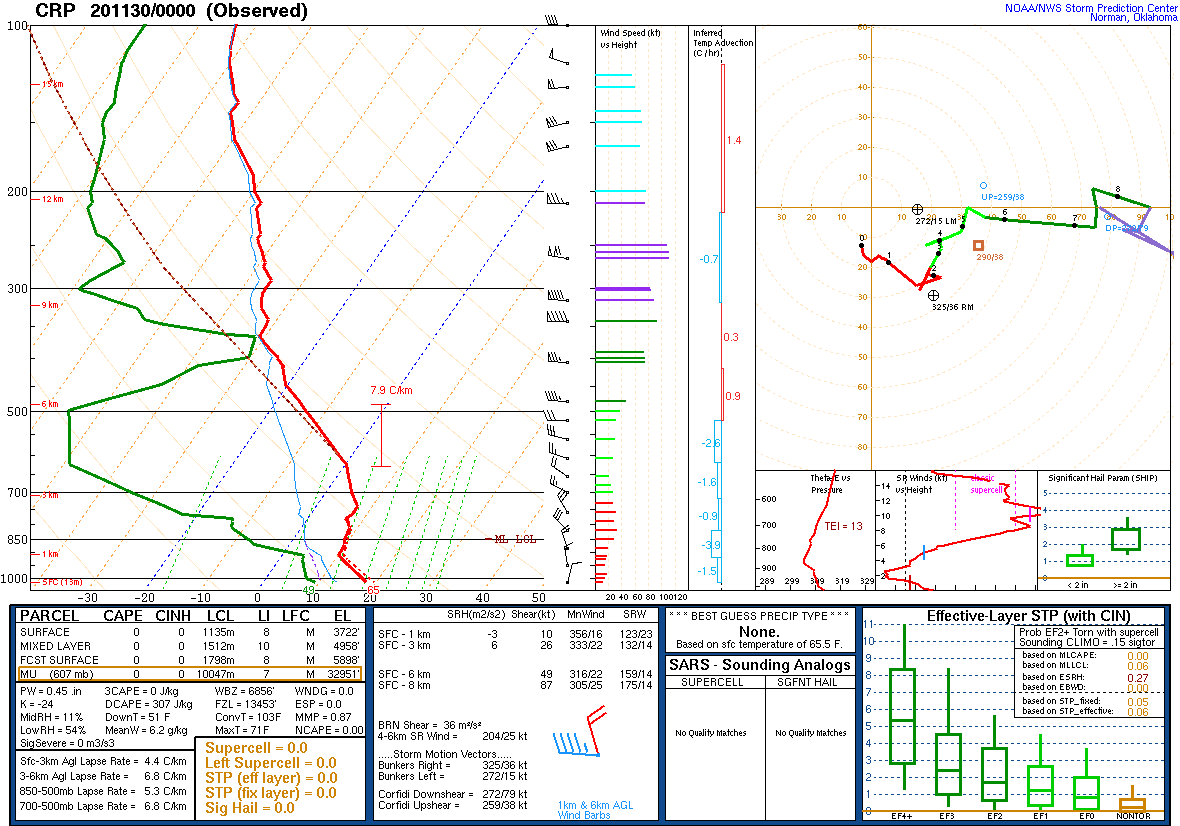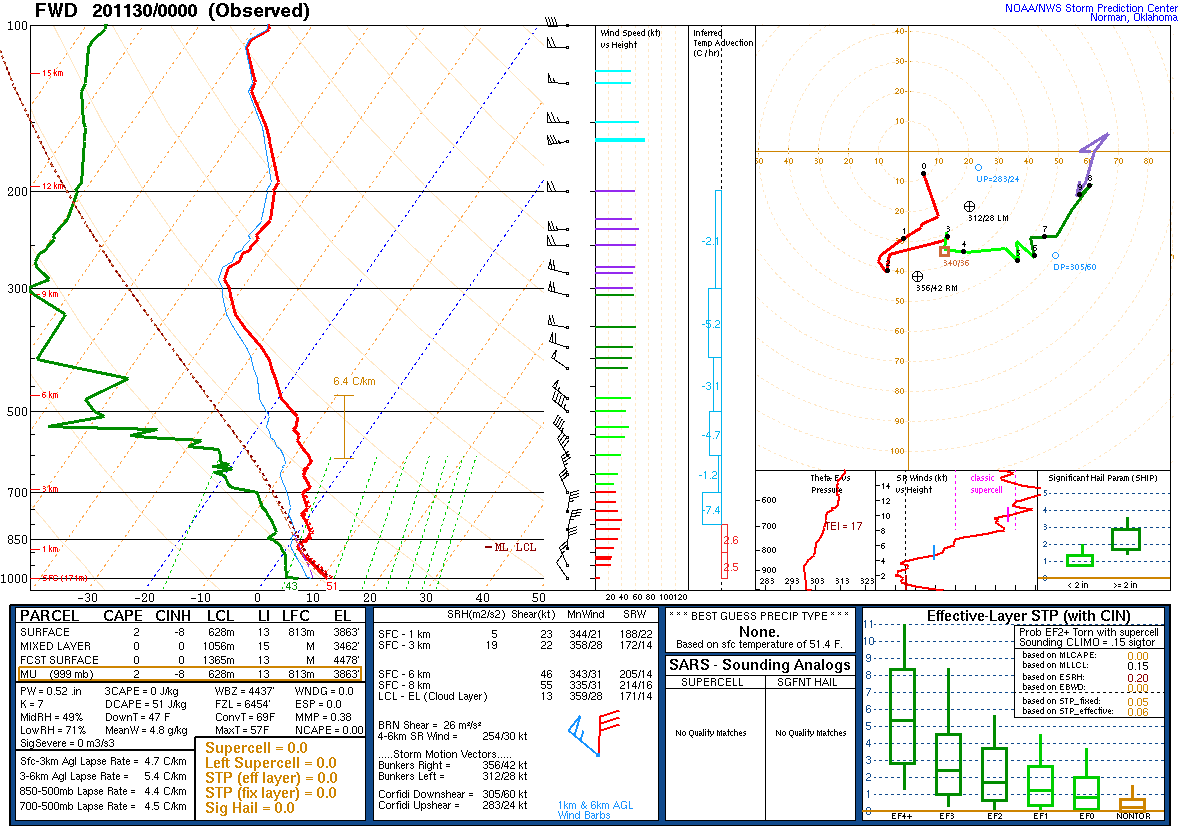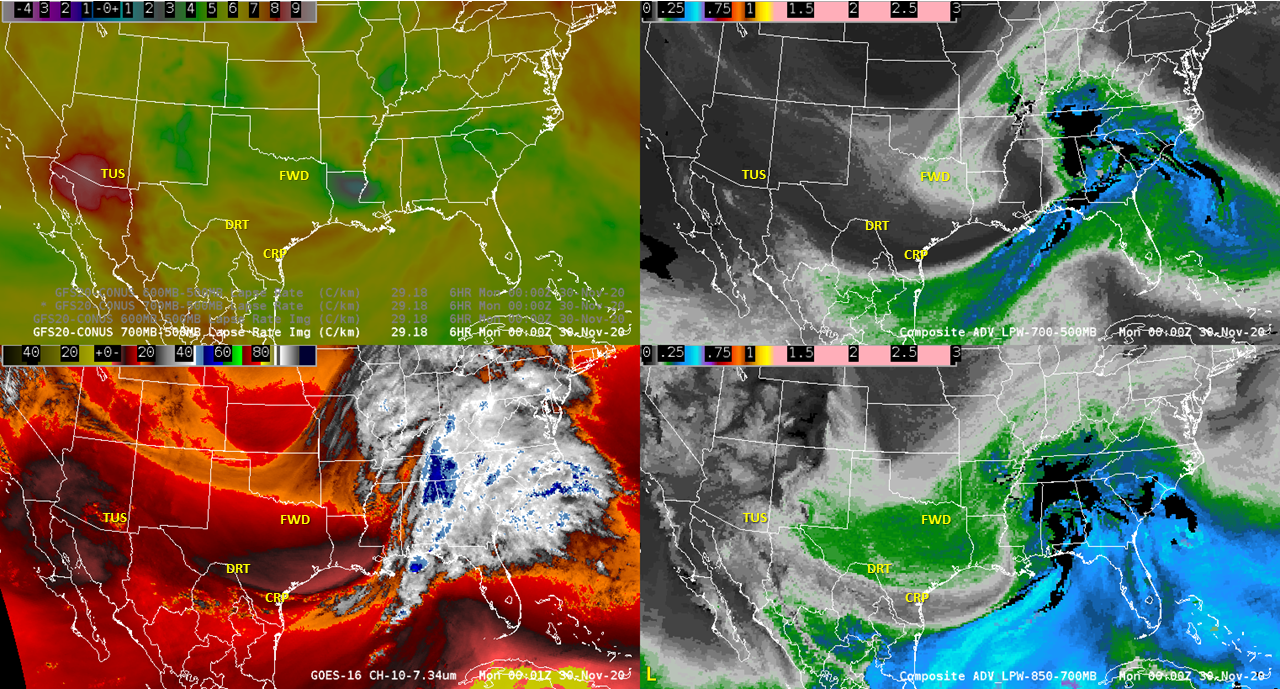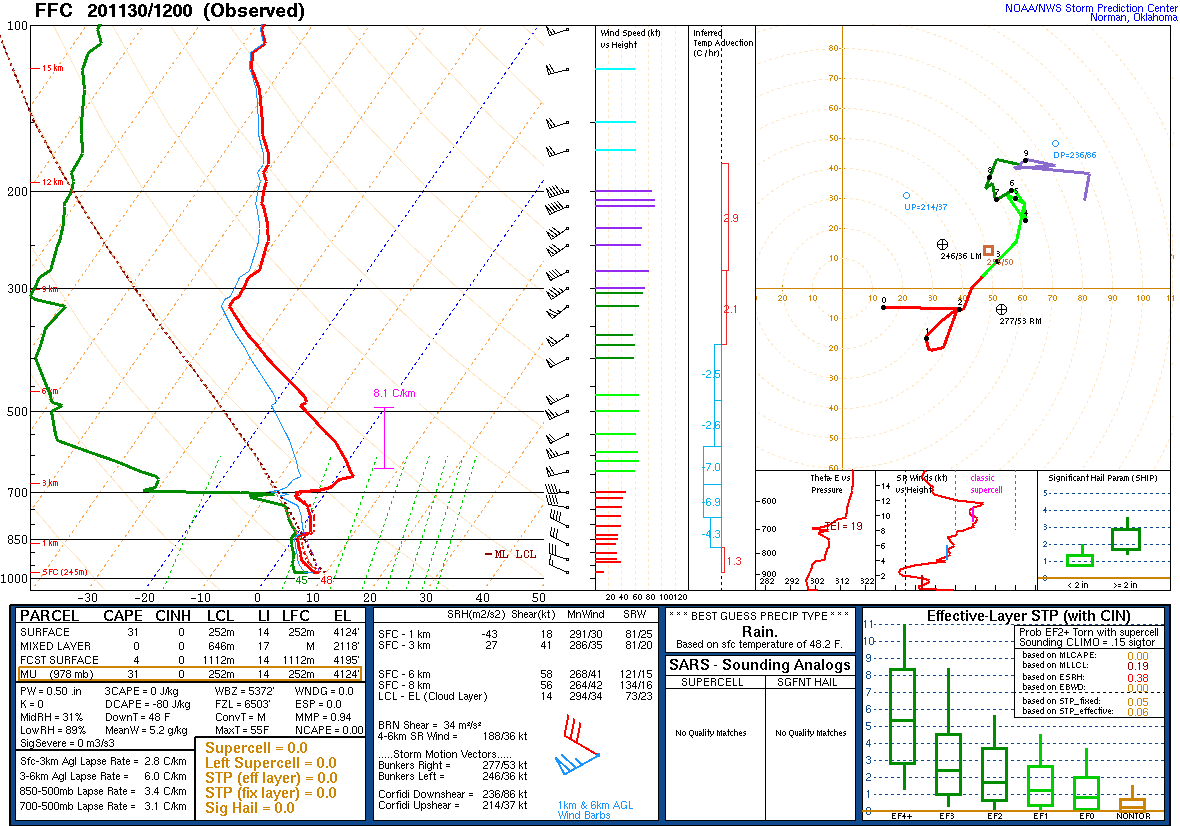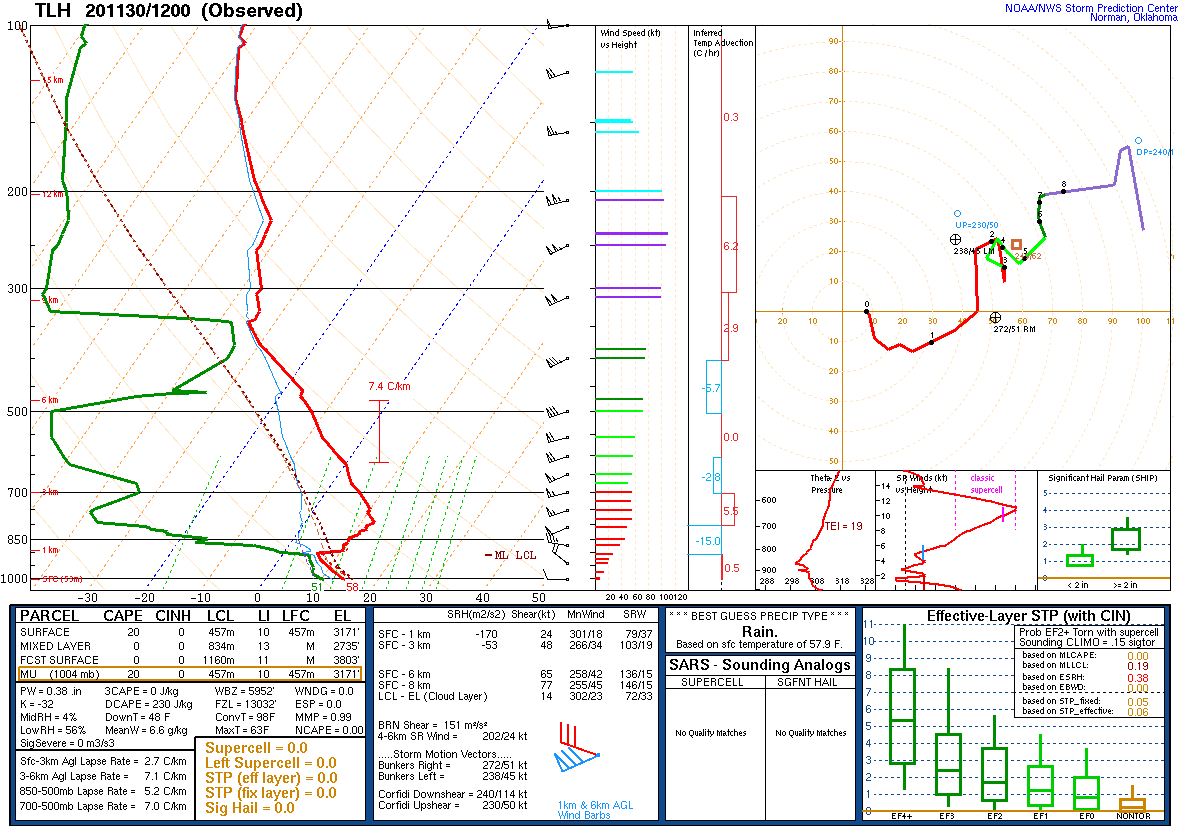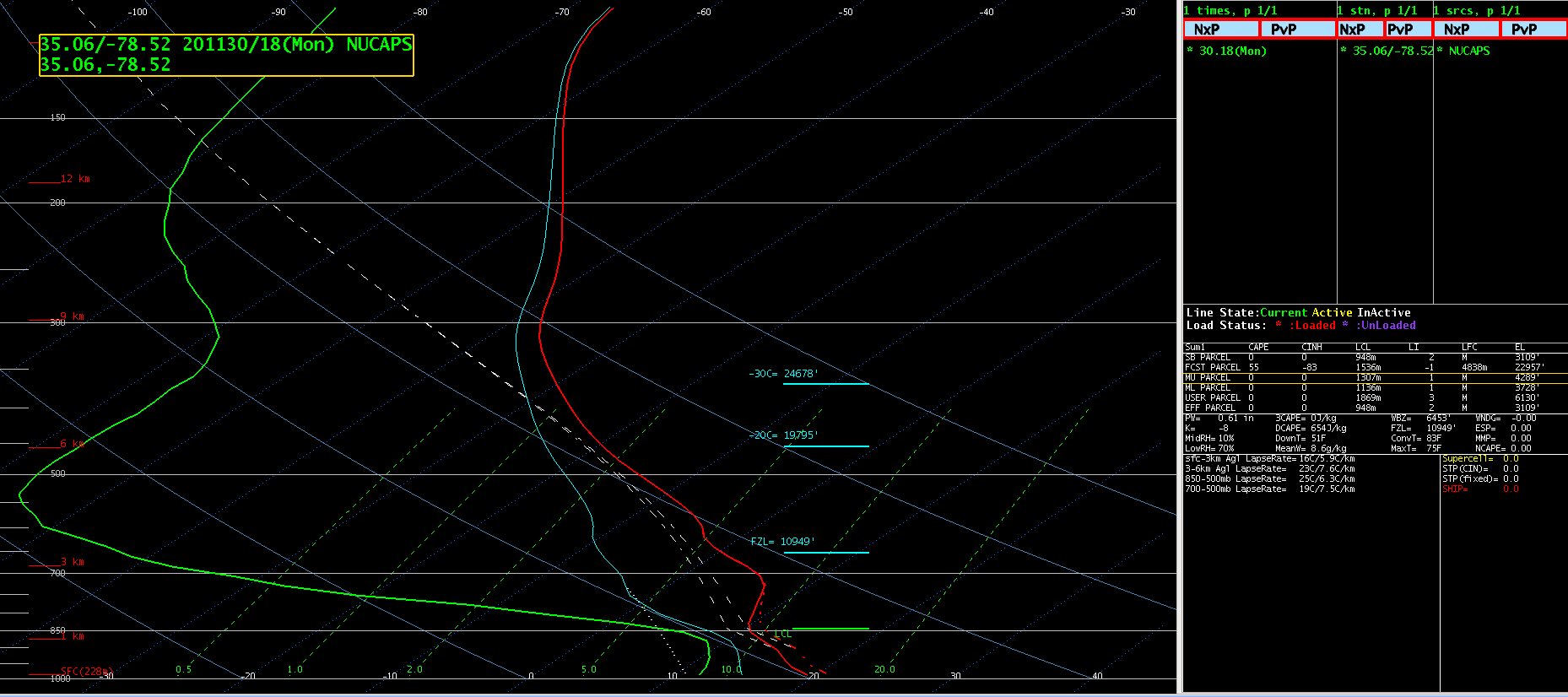30 November 2020 Severe Weather Event in the Mid-Atlantic
By Dan Bikos, Sheldon Kusselson and Jorel Torres
On 30 November 2020, a trough affected the Mid-Atlantic region and was responsible for the following severe weather reports:
https://www.spc.noaa.gov/climo/reports/201130_rpts.html
In this blog post, we’ll examine aspects of the synoptic scale setup for this event.
The following GOES-16 low-level water vapor (7.3 micron) animation:
depicts an extra-tropical cyclone moving northeastward. Thunderstorms developed in northeast Virginia around 1800 UTC and moved northeast across Maryland, Delaware, Pennsylvania and New Jersey. These thunderstorms appear to have developed at the nose of a dry slot apparent in the imagery as a region of warmer brightness temperatures. Click on the image below to see the thunderstorms of interest (yellow circle) and approximate boundary of the dry slot over the region of interest (green line):
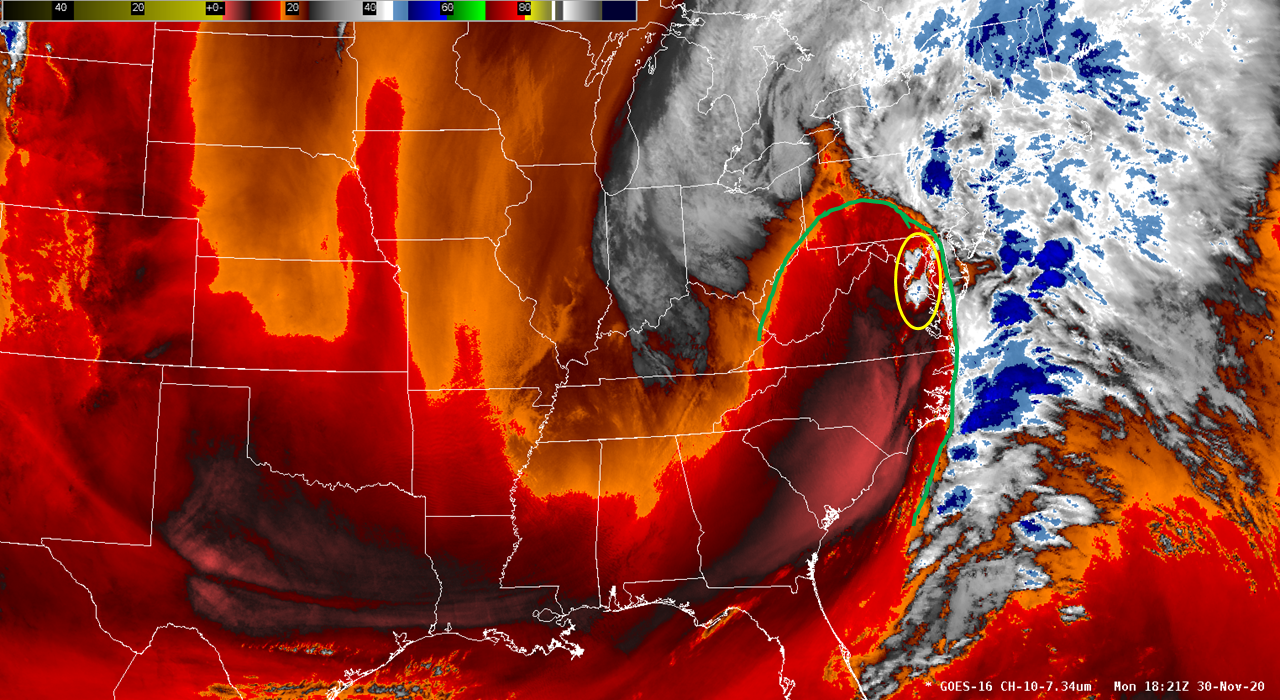 What role did the dry slot have on the thunderstorms?
What role did the dry slot have on the thunderstorms?
One of the more useful observational products to assess atmospheric water vapor in 4 dimensions is the Advected Layered Precipitable Water (ALPW) product which makes use of microwave instruments on several polar orbiting satellites. Water vapor is retrieved without the use of NWP output in the retrieval, short-term NWP output wind information is used only to advect the retrieved moisture fields. A loop of ALPW looks like this:
Upper-left panel: Surface to 850 mb Precipitable Water
Upper-right panel: 850 to 700 mb Precipitable Water
Lower-left panel: 700 to 500 mb Precipitable Water
Lower-right panel: 500 to 300 mb Precipitable Water
The loop goes back to 1800 UTC the previous day so that we may view how the moisture fields are changing in time. At low-levels, areas of higher moisture indicate the warm sector with moisture advection northward ahead of the developing cyclone. As we get higher into the atmosphere we see indications of the upper low in northern Texas / Oklahoma with drier air on its southern / southwest flank wrapping cyclonically around it on the eastern flank:
Subsidence within the dry slot would account for dry air at mid- to upper levels, but are there other sources of dry air?
Next, we’ll consider this 4 panel animation:
Upper-left: GFS 700-500 mb lapse rate
Upper-right: ALPW product in the 700 to 500 mb layer
Lower-left: GOES-16 7.3 micron imagery
Lower-right: ALPW product in the 850 to 700 mb layer
Early in the loop, during the daytime hours of November 29 we see a rather obvious region of steeper mid-level lapse rates in Arizona and northwest Mexico. The evening sounding from Tucson, AZ:
Shows a deep well-mixed layer with very steep (nearly dry-adiabatic) mid-level lapse rates. In the GOES 7.3 micron imagery we see very warm brightness temperatures since the weighting function peaks around 600-700 mb, within the well mixed warm / dry air mass. The ALPW product in the 700-500 mb layer shows this as a very dry air mass as well. The animation indicates that this air mass advected eastward towards Texas, so we may suspect some portion of the dry air observed further east may have come from the Elevated Mixed Layer (EML) across Arizona and northern Mexico. Next we’ll look at soundings to assess this.
The 00Z soundings from Del Rio, TX:
and Corpus Christi, TX:
depict dry air at mid-levels, as well as very steep mid-level lapse rates characteristic of what you may expect with an EML as we observed in the Tucson sounding.
The animation appears to show the dry air mass moving from Arizona into Texas and Louisiana combining with the developing trough where you’d expect to see a subsidence signal (mid-level drying). In fact a sounding north of the EML plume as indicated by the steeper mid-level lapse rates in the GFS at Fort Worth, TX:
shows the dry air mass at mid-levels, but not the steeper mid-level lapse rates like we observe further south in Texas, much like you would associate with being in a subsidence region of a developing trough. The dry air mass we observe on satellite images appears to be a combination of both the subsidence region of a developing extra-tropical cyclone and an EML with origins over Arizona / northern Mexico. The EML is of particular note since the steeper mid-level lapse rates may lead to a more favorable environment for severe thunderstorms. Click on this image to compare the above 00Z sounding sites with the imagery at the corresponding time:
Next, let’s assess November 30 12Z soundings, we’ll be referring to the following sounding sites (corresponding imagery from 12Z is shown):
Was the EML evident in the Nov. 30 12Z soundings?
Yes, in Atlanta, GA:
and also in Tallahassee, FL:
Note that the region of warmer brightness temperatures in the GOES 7.3 micron band and drier air mass in the ALPW 700-500 mb layer is not quite to central North Carolina at 12Z:
The mid-level dry air mass had not yet arrived at sounding time, however without an 18Z RAOB is there another way to assess the air mass at Greensboro, NC (GSO)?
Yes, NUCAPS provides soundings (except no wind data) around 18Z, here is the NUCAPS sounding at that time a little southeast of Greensboro, NC within the dry mid-level air mass:
We can see that the mid-level dry air mass has moved through Greensboro, and the mid-level lapse rates are quite steep (7.5 degrees C per km), this is confirmation of the mid-level lapse rates caused by a combination of the EML and being in the subsidence region of the extra-tropical cyclone.
Compare the 12Z Greensboro sounding with the 18Z NUCAPS sounding near Greensboro
Note that low-level features such as sharp capping inversions may not be adequately resolved with NUCAPS soundings, however that is not an issue here since we are assessing mid-level drying and lapse rates.
Moving on to the time of the severe thunderstorms, we analyze the GOES visible (0.64 micron) imagery:
Cloud coverage was quite extensive during the morning hours over the region that experienced severe weather which likely limited the overall severe threat, however there was a narrow region of clearing that developed that allowed for sufficient insolation and thus destabilization that contributed to the severe thunderstorms.

